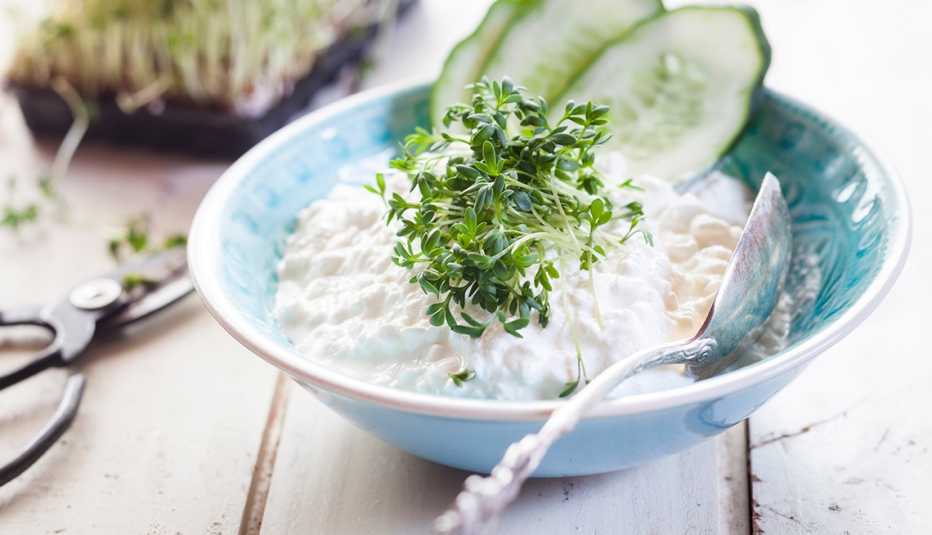Whether you’ve been a healthy eater your whole life — or lately fallen off the nutritional wagon — it’s important to take a hard look at your diet after age 50. Around that point, experts say, it pays to be choosier about your foods, and make sure you’re getting enough nutritional bang for your buck. “Our need for energy declines starting in middle age,” says Christine Rosenbloom, registered dietitian and nutritionist, professor emerita at Georgia State University and coauthor of Food & Fitness Over 50. “There’s less room for drinking a pitcher of margaritas and having a basket of chips — unless we want to start seeing that weight creep. And nobody wants that.”
Beyond adapting to a potentially slower metabolism, you also want to compensate for things like a tendency for bones to weaken, bowel function to slow and muscle mass to decline (around 1 percent a year until age 65, after which the loss can double.) In general, older adults “need to make sure they’re getting lots of fruits and vegetables, eating lean meats if they are eating meat, chicken or fish, and avoiding saturated fats and sugars,” says Marie Bernard, M.D., chief officer for scientific workforce diversity at the National Institutes of Health (NIH). “A good diet can help get blood pressure under better control, decrease the risk of heart problems and contribute to the prevention of things like diabetes and cancer.”
To build your own healthy diet, remember that “foods work together in concert,” says Joseph Gonzales, a registered dietitian at the Mayo Clinic. “You need a whole symphony for a spectacular musical piece.” But if you add these eight foods to your own orchestra, you’re well on your way to a healthier tune.
1. Berries
Berries provide “one-stop nutrition” for the over-50 crowd because they’re high in fiber, vitamin C and anti-inflammatory, antioxidant flavonoids. “Fiber helps keep us regular, manage our weight and protect against diseases like diabetes, heart disease and cancer,” says registered dietitian nutritionist Nancy Farrell Allen, a spokesperson for the Academy of Nutrition and Dietetics. Men 51 or older should eat 30 grams a day, and women 50 years or older should eat 21 grams a day.
Berries also appear to be good for our aging brains. “Berries contain potent antioxidants that may improve motor skills and short-term memory,” Allen says. That’s why they are a key part of the MIND diet, which focuses on foods that fight neurodegenerative delay. (Other “brain-healthy foods from this brain-healthy diet include vegetables, beans, whole grains, nuts, seafood and poultry.) A Tufts University study from 2020 looked at 20 years of eating by 2,800 people age 50 or older and found that those who had a low intake of flavonoid-rich foods like berries, apples and tea were two to four times more likely to develop dementia.
Berries have other benefits. A 2022 British study out of King’s College London found that consuming 100 grams (about a cup) of fresh cranberries a day helps prevent cardiovascular disease. Another study this year, this one out of the University of California, Davis, found that eating a small number of dried goji berries may help delay or prevent macular degeneration.
Alicia Arbaje, M.D., associate professor of medicine at the Johns Hopkins School of Medicine in the Division of Geriatric Medicine and Gerontology, singles out the wild blueberry (usually sold in the frozen food section). “They have three or four times the antioxidants of conventional blueberries. Add them to your oatmeal or smoothies.”

